It must have happened to you that you approached your car with full hands and struggled to open the car door, and maybe you wished that you didn’t need to find the key in your pocket or bag and you could easily open the car door. or that you don’t have to use your hands to put your shopping bags in the trunk of the car, and the trunk door opens by itself, and even after sitting inside the car (especially at night), you don’t need to look for the brain of the start switch. If not, turn on the car by pressing a key. The answer to all these wishes is to keyless entry systems in cars, which in this article from act group we are going to discuss a little about this issue and briefly explain about it.
When your car has keyless entry, you don’t need to press the remote key to open the car doors, and if you have the remote key with you (for example, in your pocket or bag), as soon as you approach the car, it is possible The doors can be opened and you can open the car and enter the car with the car handle. Also, after you enter the car (with the FOB key), it will be possible to start the car.
systems were first used in luxury cars in the 1990s and have since become a popular feature in a wide variety of vehicles.
The first keyless entry systems used infrared technology to communicate between the FOB key and the car, but in the future, infrared was replaced by radio frequency technology, which enabled more and more reliable communication between the FOB key and the car.
would be In this way, keyless entry systems gradually became a common and well-known feature in cars on the market.
The popularity of keyless entry systems is due in part to their convenience and ease of use, as well as their security benefits.
Read More : Best selling impored cars in Iran
How keyless entry systems in cars work
There are two main types of keyless entry systems:
- Passive
- Active
Passive keyless entry systems allow the driver to unlock the car simply by approaching it with the key fob in their pocket or purse.
The car’s computer recognizes the signal belonging to the car through the FOB key and automatically opens the doors.
For example, an Iranian car in which a passive keyless entry system is used is “Tarai Automatic Gear“. Active keyless entry systems require the driver to press a button on the key fob to open the door or start the engine.
The car’s computer confirms the signal received from the key fob before opening the door or starting the engine.
An example of the Active Keyless Entry system is the BMW 7 Series, which requires the driver to press a button on the key fob in order to unlock the doors and start the engine.
Components of keyless entry system
Entry unit and keyless start
The keyless entry and start unit, hereinafter referred to as PEPS, acts as the main unit in controlling the communication between the other components of the keyless entry system.
In fact, it is a computing operator for the purpose of authenticating the FOB holder, commanding the operation of the steering wheel lock, starting the car, detecting the FOB inside and outside the car, and opening and closing the doors. In Figure 1, you can see an example of PEPS.

figure 1
On and off button
Button ON and OFF, hereafter referred to as SSB, provides an easy input to realize the engine start/stop system.
With SSB, vehicle starting is managed in a safe manner without the need for a mechanical key. In Figure 2, you can see an example of SSB.
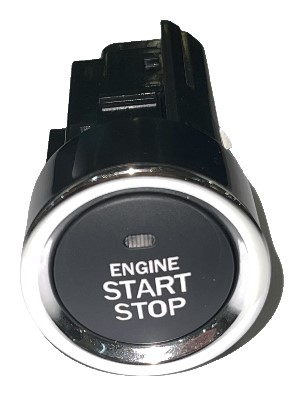
figure 2
Electronic steering lock
will be called the ESCL system from now on, is considered as one of the main parts of the keyless entry system.
In fact, the traditional mechanical steering lock system has been replaced by ESCL. ESCL’s main function is to lock and unlock the steering column.
As a standard function, ESCL is required to lock the steering column to prevent unauthorized use of the vehicle. In Figure 3, you can see an example of ESCL.
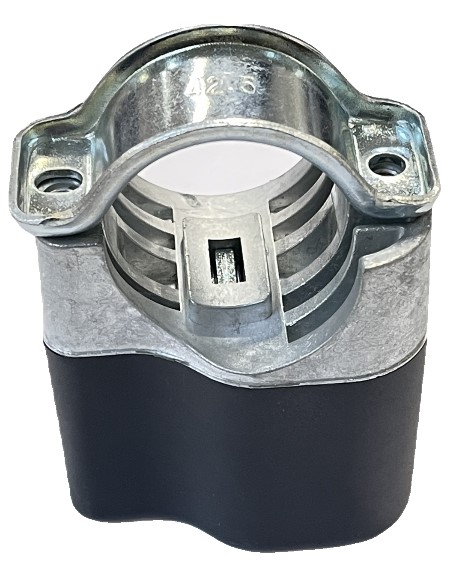
Figure 3
Remote control
As an alternative to the mechanical key, the remote control of the keyless entry system communicates with the vehicle’s PEPS unit via radio frequency and contains a microchip that sends a unique code to the PEPS unit at the push of a button.
FOB piece It also has a battery that powers the transmitter and allows it to send the signal to the receiver in the car. In Figure 4, you can see the FOB and the metal blade.
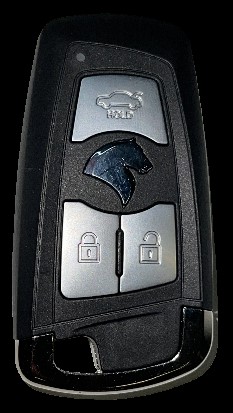
Figure 4
Internal antennas
antennas are placed in positions (usually dashboard, center console and rear bumper) according to the radiation pattern of each antenna in order to distinguish whether the FOB is inside or outside the vehicle.
Internal antenna of LF type with working frequency of KHz 125, It is designed to receive the signal from the FOB and send it to the PEPS unit. In Figure 5, you can see the internal antenna of Tara’s car.

Figure 5
Handle antenna
Depending on the dimensions and space of the door handle and the recognition of the car manufacturer, the handle antenna can be of button or touch type.
As soon as the driver’s hand touches the FOB with the touch handle, the connection between the handle’s antenna and the car’s PEPS unit is established and the command to open or lock the door is executed. In Figure 6, you can see the Denaplus car handle antenna and Figure 7, the Tara car handle antenna.
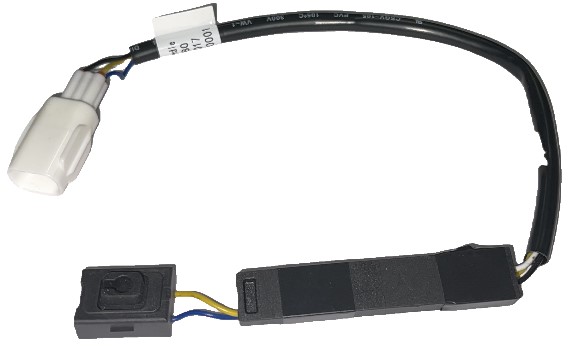
Figure 6
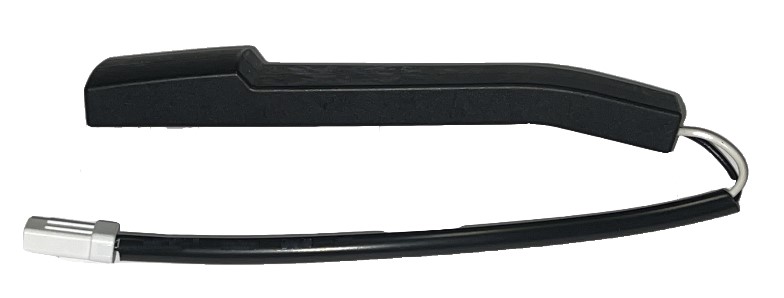
Figure 7
Rear trunk door automatic opening sensor
The trunk opening system with foot movement is based on a type of sensor designed to detect the movement of a person’s foot near the rear bumper of the vehicle.
This is especially useful when your hands are full and it is not possible to press the trunk door button.
The technology required to open the car’s trunk door is not very new, but in the past it was only used in expensive cars, but gradually with the cheapness and widespread use of the above technology, today we see its use in mid-range cars as well.
The first famous car manufacturer to use this system in its car was Ford. Since then, other car manufacturers have also started using this system and now many new cars look at it as a standard feature (Figure 8).
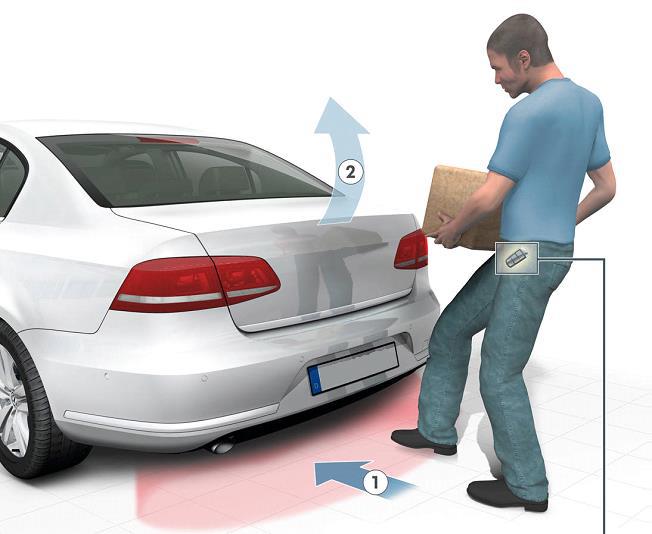
Figure 8
Figure 9 shows how to place internal antennas and handle, PEPS unit, on and off switch and electronic steering lock.

Figure 9
Security and performance concerns in keyless entry systems
Vulnerability to hacking and other security risks
While keyless entry systems offer convenience and ease of car use, security concerns have always been raised in recent years.
Thieves have developed tools that can intercept the signal from a key fob and use it to unlock the car or start the engine without the owner’s knowledge.
One of the main concerns with keyless entry systems is their vulnerability to hacking and other security risks.
In 2019, researchers from the German automobile club ADAC demonstrated how they were able to hack and steal cars from several different manufacturers using a technique called “relay theft“.
Relay spoofing involves using a device to amplify the signal from a key fob and relay it to another device kept near the car, tricking the car’s computer into thinking the key fob is within a designated distance from the car.
Once the signal is intercepted, thieves can unlock the car, start the engine, and drive away without the need for a physical key. This type of theft has become increasingly common in recent years, especially in Europe, where many cars are equipped with keyless entry systems.
To address these security concerns, some car manufacturers have introduced additional security measures such as proximity sensors and encryption algorithms to make it more difficult for thieves to intercept the signal from the key fob.
However, as hackers become more sophisticated, it is important for car manufacturers to continue to invest in new security measures to protect their customers’ vehicles.
Potential failure or lack of FOB while driving
In a keyless entry system, if the key fob is thrown from the car while driving, it can result in loss of communication with the fob. This can cause various issues depending on the specific implementation of the keyless entry system.
In some systems, if the vehicle loses communication with the key fob, the engine may automatically shut off as a safety measure.
This reaction is because the car’s computer may interpret the loss of communication as an attempt to steal the car.
In other systems, the vehicle may operate normally, but the driver may not be able to restart the vehicle. Regardless of the details of the system, it is generally not recommended to drive a car without a key fob.
The aforementioned incident could potentially cause safety issues such as the car shutting off unexpectedly while driving or not restarting when needed.
If you find yourself in a situation where the key fob has been thrown from the car while driving, it is important to stop safely and retrieve the key fob before continuing to drive.
Entering the car and emergency start
Imagine going to the car one day when you are in a hurry, and confident that you do not need to do anything extra to get into the car and turn it on, you go to the driver’s door, touch the handle and pull it towards you, but the door is not opened!
Nothing happens when you press the button on the FOB key and you just realize that your remote battery is dead.
What should you do now? Neither the car door opens nor the car turns on!
has made the necessary provision for this issue .It is enough to open the car door by pulling out the key blade hidden in the FOB and after entering the car by keeping the FOB in the designated place and pressing the start button, start the car. Just remember to replace the FOB battery as soon as possible.
It should be noted that the location of the FOB key for emergency start is different in each car. For example, in a Tarai car with an automatic transmission, this place is in a certain place under the steering wheel, but in a Dena plus car with an automatic transmission, you must hold the FOB next to the start button and then press the start button.
Your vehicle owner’s manual or dealer can provide instructions on how to replace the battery. It’s worth noting that backup methods for unlocking and starting a vehicle may vary depending on the specific make and model of the vehicle and keyless entry system.
It’s always a good idea to familiarize yourself with backup methods for your car’s keyless entry system to ensure you can still access and start your car in an emergency.
Developments and future trends
Advances in biometric security technologies
An example of a biometric security technology that can be used in keyless entry systems is facial recognition (Figure 10).
Using facial recognition technology, a camera is installed in the car and scans the driver’s face to determine if they are authorized to enter the vehicle.
This technology could potentially eliminate the need for a physical key or even a smartphone app, as the driver’s face acts as the key.
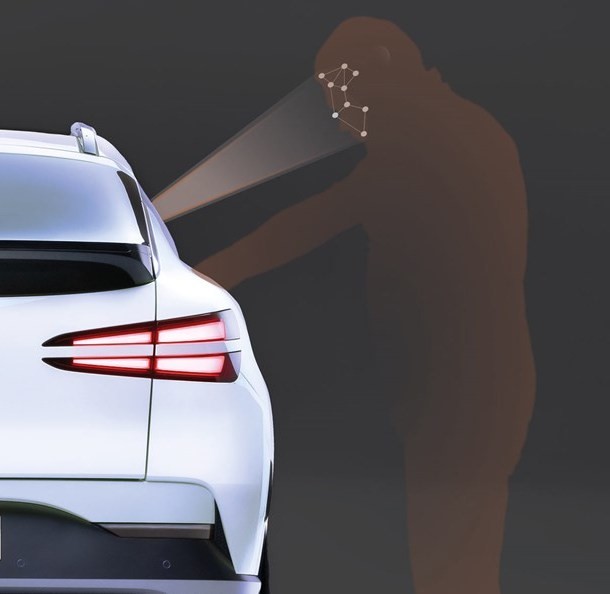
Figure 10
Another biometric security technology that can be used is fingerprint recognition (Figure 11). This technology is already widely used in smartphones and could easily be adapted for use in keyless entry systems in cars.
The driver simply places his finger on a sensor in the car to unlock the doors and start the engine.
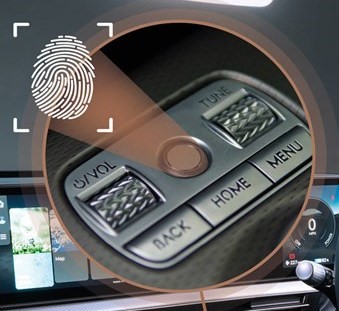
Figure 11
In addition to these biometric technologies, there are other forms of advanced security features that can be incorporated into keyless entry systems such as voice recognition and iris scanning.
These technologies add an extra layer of security to keyless entry systems and can help prevent unauthorized access to the vehicle.
Conclusion
systems were first used in luxury cars in the 1990s and have since become a popular feature in a wide variety of vehicles.
In a car with keyless entry, there is no need to press the remote key to open the car doors, and if the FOB is with the driver, as soon as he approaches the car, it is possible to open the doors by touching the door handle and start the car by pressing the ignition key. and off is provided.
The popularity of keyless entry systems is partly due to their convenience and ease of use, as well as their security benefits.
Keyless entry system components include PEPS unit, electronic steering wheel lock, FOB , internal antennas and handle antennas, on and off switch, and automatic trunk door opening sensor.



0 Comments